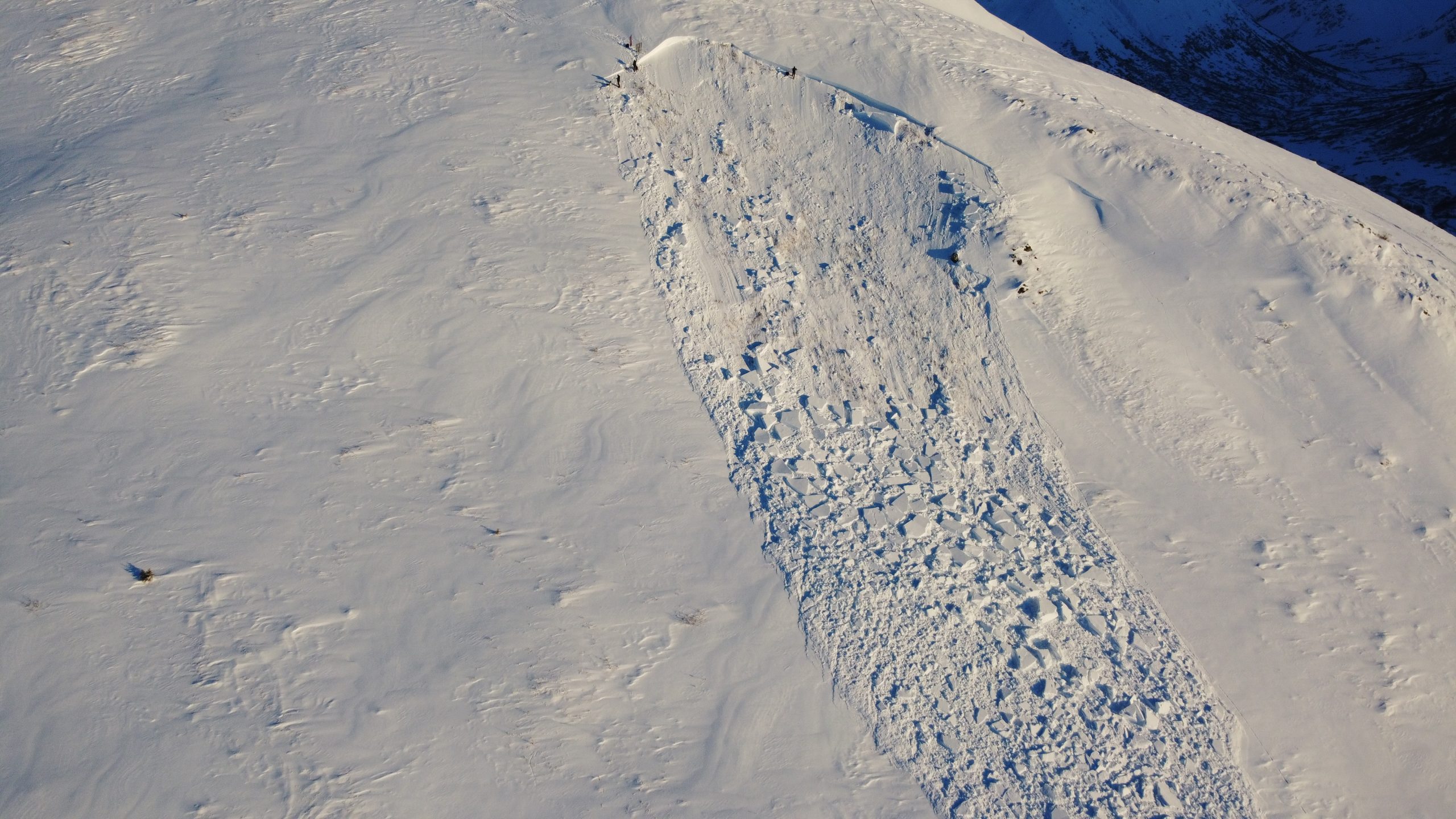

Hatcher Pass
|
|
Small to large persistent slab avalanches will be possible to human trigger at mid and upper elevation, on all aspects today. Slab avalanches will be unlikely at low elevation. If this problem sounds like a broken record, well it is. Variable conditions exist with poor structure and stability. Faceted powder can be found in few protected pockets around the mountains. Thin conditions and rocks still exist in specific locations.
Thank you to all the folks who donated during Giving Tuesday. If you missed out, please consider donating here. Thank You!
| |
|
|
|
|
|
| Travel Advice | Generally safe avalanche conditions. Watch for unstable snow on isolated terrain features. | Heightened avalanche conditions on specific terrain features. Evaluate snow and terrain carefully; identify features of concern. | Dangerous avalanche conditions. Careful snowpack evaluation, cautious route-finding, and conservative decision-making essential. | Very dangerous avalanche conditions. Travel in avalanche terrain not recommended. | Extraordinarily dangerous avalanche conditions. Avoid all avalanche terrain. |
| Likelihood of Avalanches | Natural and human-triggered avalanches unlikely. | Natural avalanches unlikely; human-triggered avalanches possible. | Natural avalanches possible; human-triggered avalanches likely. | Natural avalanches likely; human-triggered avalanches very likely. | Natural and human-triggered avalanches certain. |
| Avalanche Size and Distribution | Small avalanches in isolated areas or extreme terrain. | Small avalanches in specific areas; or large avalanches in isolated areas. | Small avalanches in many areas; or large avalanches in specific areas; or very large avalanches in isolated areas. | Large avalanches in many areas; or very large avalanches in specific areas. | Very large avalanches in many areas. |
Two human triggered avalanches occurred on 12/3 on SW aspects on Marmot. One was human triggered from the ridge at approx. 4000′ and failed on persistent grains and was large enough to bury, injure of kill a person. The other was a D1.5 and was remotely triggered at approx. 3200′ from 30′ away and also failed on persistent grains.

12/3 remotely triggered avalanche on Marmot, SW, 3200′. Note: This location is very close to the standard untrack, where people build kickers, kid go sledding, and often multiple people are seen skiing/riding at the same time. *ZOOM in to see people for scale
A D2 slab avalanche was observed in Rae Wallace and believed to have occurred during the wind event 12/2-12/3. If you have information about this avalanche, please contact us. Most of the avalanches in this photo (below) are old. The one to the left is new.

Rae Wallace chutes with new slab on the lookers left. 4500′ NW
| Signal Word | Size (D scale) | Simple Descriptor |
| Small | 1 | Unlikely to bury a person |
| Large | 2 | Can bury a person |
| Very Large | 3 | Can destroy a house |
| Historic | 4 & 5 | Can destroy part or all of a village |
Persistent slabs will continue to be a problem this weekend on all aspects, at the mid to upper elevations. They will be possible to human trigger, small to large in size, up to 3 feet deep, on slopes 35 ° and steeper. Remotely triggered avalanches will be possible from the flats below a steeper slope, from adjacent terrain, or from a distance. Hard slabs will allow you to get out onto a slope before failing above you, making escape very difficult to impossible, and ski cuts ineffective.
Persistent slabs will be unlikely to human trigger at low elevation, but may be possible in very isolated locations. Most of the snowpack at low elevation is comprised of sugary, faceted snow and lacking a slab component.
This problem is very difficult to predict and carries a high level of uncertainty. Due to a generally shallow snowpack, being caught and carried in any avalanche also carries the added risk of rock hazards.
There are two different persistent slabs that currently exist in the snowpack.
One problem is shallow in the snowpack, up to a 1 foot deep sitting on an old layer of near surface facets. This slab formed from the early December wind event, and is generally located on West to North aspects.
The deeper problem, up to 3 feet deep, is a persistent slab sitting on an old, weak layer of facets near the ground which were formed in October. This problem can be found on all aspects and elevations.
Considering the lingering, unreliable and uncertain nature of this problem, we recommend conservative terrain choices, lacking any terrain traps. Recent avalanches, whumphing, collapsing and shooting cracks are all red flags for this problem. If you encounter stiff snow, expect that it us sitting on weaker layers below and therefore suspect. We recommend testing the snow with pole tests, hand shears, and instability tests. Spot your partners, ski/ride one at a time, and use appropriate safe zones out of the way of any potential avalanche.
NWS Rec Forecast here.
NWS point forecast here.
State Parks Snow Report and Motorized Access information here.
Hatcher Pass received 3-4″of new snow on 12/1. Moderate winds earlier in the week tapered off Wednesday afternoon.
Marmot Weather Station 4500′
Temperature 11/28-12/6

Marmot Winds- 12/3-12/5

Wind Gusts

Independence Mine 3550′
Temperature last 7 days

Winds 12/3-12/5

